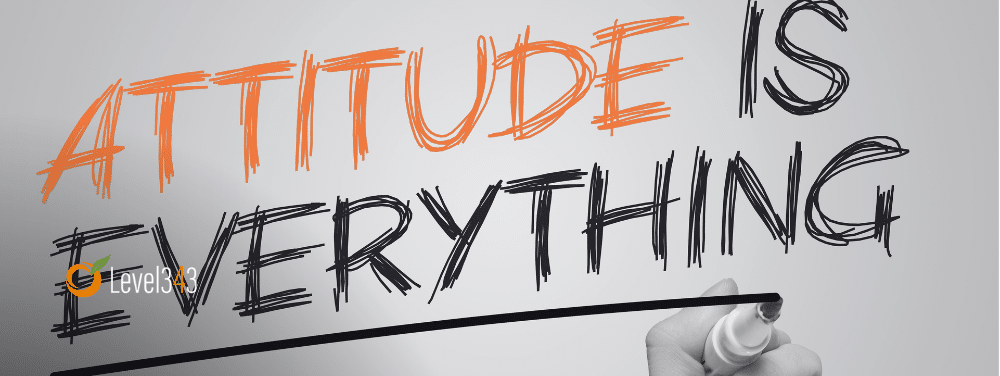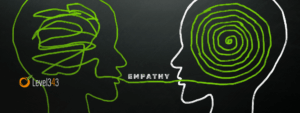The concept of brands exists to help build transactional relationships. You learn that XYZ product is good and start looking for that brand anytime you want more XYZ product. Simple. But there’s a subset of brands that seem to transcend this fundamental nature, fostering connection, loyalty, and, on occasion, love. Brands that resonate deeply, entwining their essence with an authentic brand purpose, inevitably capture hearts, invoking a sense of nostalgia and attachment.
In 2018, Lego earned its position as the most loved brand in Europe. At times, Macbook has been the top laptop to own by a certain crowd. People remember the comforting taste of Heinz Baked Beans from childhood. Adults on down might be heard humming a few notes of “I wish I were an Oscar Myer Weiner.” Such brands, with their undeniable appeal, leverage brand archetypes to foster a deeper connection with consumers, attributing human characteristics to themselves and allowing users to relate on a more profound level.
Decoding the Brand Archetypes
The Swiss psychoanalyst and psychologist Carl Jung introduced the concept of archetypes—think of them as universal symbols tucked away in our collective subconscious. Everyone around the globe, no matter where they’re from, has these ingrained templates that shape our ideas, beliefs, and actions. Cool, right?
Now, when you add that concept to the world of branding, you get brands imbued with these unique personalities and values, creating a kind of shorthand to forge real, genuine connections with us, the consumers. It’s like brands using these archetypes whisper to our subconscious, “Hey, we’re alike; we understand each other,” creating a bridge between the brand and our world.
There are 12 brand archetypes, each representing a specific set of values, characteristics, and behaviors designed to resonate with the human experience:
1. The Innocent:
The Innocent archetype desires simplicity and purity. It’s often the go-to for brands that want to build an image of wholesomeness and optimism. Brands like Dove embody this archetype, striving to associate their products with innocence and morality. The Innocent archetype is appealing to people who value honest, genuine connections, have a soft spot for nostalgia, and think about a return to simpler times.
2. The Everyman:
The Everyman archetype is your friendly neighbor. This brand personality seeks to form connections and relate to the everyday Joe or Jane. They’re the real, unpretentious, down-to-earth brands like IKEA, who focus on practicality and accessibility. The Everyman archetype resonates with individuals who value reliability, functionality, and a sense of belonging—like being part of a community where everyone gets each other.
3. The Hero:
The Hero archetype is Superman: Bold! Courageous! Out there solving problems and making the world a better place! Nike is a prime example, inspiring consumers to overcome challenges and achieve their goals. The Hero appeals to those who are motivated by chasing achievements, crushing goals, and triumphing over evil.
4. The Outlaw:
The Outlaw archetype is the rockstar–the rebel with a cause, shaking things up and challenging the norm. We’re looking at you, Harley-Davidson. Harley is the king of this brand archetype, riding high with their symbol of freedom and their anti-establishment vibes. The Outaw is a magnet for those who love to tear down boundaries, the folks who value their independence and get a kick out of breaking the rules and living free from constraints.
5. The Explorer:
The Explorer archetype wears Indian Jones’ hat and thinks hanging from a rock face is fun. The Explorer has an itch for freedom and adventure, attracting consumers who focus on discovering and experiencing the uncharted and the new. The North Face, through its adventure gear, aligns with this brand archetype, inspiring exploration and discovery. The Explorer resonates with independent spirits, the ones thirsting for authentic experiences and fulfillment through exploring the unknown.
6. The Creator:
The Creator archetype is the artistic genius of brand personalities, valuing innovation and imagination. , and it’s adopted by brands that encourage creativity and self-expression. It’s the calling card for brands that fuel creativity, letting people express themselves. Lego is a quintessential example, enabling users to build and create, fostering imagination. The Creator is a hit with those who like to express themselves, value originality, and have a vision that they’re not afraid to bring to life.
7. The Ruler:
Who doesn’t love that royal feeling? The Ruler archetype is the kingpin of brand personalities. It exudes authority, power, and control, usually aligned with luxury brands that promise stability. Rolex, with its premium watches, exemplifies this archetype, symbolizing status and success. The Ruler archetype resonates with individuals who desire power, control, and a sense of accomplishment.
8. The Magician:
The Magician archetype revolves around transformation and making dreams a reality, often aligning with brands that promise wonder and amazement. Disney, with its enchanting experiences, is the true wizard, delivering experiences that are nothing short of enchanting and transformative. The Magician is the go-to for anyone hungering for the extraordinary, those who are enchanted by the magical, and everyone looking to experience a bit of transformation in
9. The Lover:
The Lover archetype is Casanova, rooted in passion, desire, and sensuality. It’s usually portrayed by brands that want to spark intimate connections. Victoria’s Secret is an excellent example, emphasizing allure and intimacy. The Lover is a hit with those who cherish relationships, have an eye for aesthetics, and want to soak in experiences filled with pleasure and a bit of indulgence.
10. The Caregiver:
The Caregiver archetype is the comforting embrace of Mother Nature, focused on nurturing and protection, aligning with brands that offer care, empathy, and support. Johnson & Johnson represents this archetype, showcasing nurturing and protective qualities through its range of care products. The Caregiver is the one for crunchy granola folks who are into nurturing, supporting, creating, and being in a protective, caring environment.
11. The Jester:
The Jester archetype is the life of the party: joy, humor, and entertainment. It’s the spirit animal for brands aiming to spread happiness and give us all a chuckle. Burger King, with its fun and eccentric road signs, represents this playful archetype. The Jester is a crowd-pleaser for anyone who’s up for a playful time, who loves a good laugh, and who’s in the mood for a dash of unexpected in their day-to-day.
12. The Sage:
The Sage archetype is the wise old owl of brand personalities; it values knowledge and truth, often represented by brands seeking wisdom and insights. Google aligns perfectly, sitting on a mountain of information and dishing out knowledge and insights like candy. The Sage is a favorite for those who have a thirst for learning, who appreciate the truth, and who are always on the hunt for a bit of wisdom.
Building Deeper Connections Through Brand Archetypes
By aligning with a specific archetype, your brand can engage consumers on an emotional and psychological level, engendering a sense of identity and belonging. For instance, the iconic Apple aligns with the Creator archetype, embodying innovation and fostering self-expression, thus forming an emotional attachment with users who identify with these values.
The Authenticity Factor
In an era dominated by information overload and heightened consumer awareness, being real and genuine is the cornerstone of building meaningful connections between you and your consumers. It’s simple—authenticity creates trust. So, for brands that are interested in using the archetype models, it’s crucial that what you do aligns with what you say you stand for.
Look at Patagonia. It’s a perfect example of an Explorer brand that walks the talk. It seamlessly marries its advocacy for protecting Mother Earth with every bit of its business operations. This real-deal approach strengthens the bond with people who share the same values and dreams. The genuine connection, mixed with shared beliefs, turns customers into fans who want to spread the word, making the brand’s voice louder and its impact bigger.
The Lego Paradigm
Lego, a Creator brand, is the ultimate example of how brand archetypes and forming bonds with us, the consumers, really go hand in hand. By sparking imagination and creativity, Lego goes way beyond just being a toy maker—it becomes a launching pad for innovative ideas and a way for people to express themselves. Staying true to these values has locked in Lego’s spot as a brand people just can’t help but love, hitting home with people of all ages!
Archetypes and Brand Differentiation
In the saturated market landscape, how your brand stands out is a crucial determinant of how well your brand succeeds. By harnessing the power of archetypes, you can carve a distinct identity, enabling you to stand out amidst the clutter. Harley-Davidson, aligning with the Outlaw archetype, resonates with consumers seeking an escape from conformist societal norms.
The Psychological Interplay
There’s no denying it, there’s this cool give-and-take between brand archetypes and how we, as consumers, think and feel. By giving brands a human touch, archetypes make it easier for us to connect on a mental and emotional level, letting us see a bit of ourselves in the brand’s character. This reflection, mixed with common goals and values, really ramps up our love and loyalty to the brand.
Archetypes: A Continual Evolution
While the essence of archetypes remains constant, their manifestation evolves in tandem with societal shifts and cultural dynamics. Brands need to attune their archetype expression to the evolving consumer landscape, ensuring relevance and resonance. In this continuous evolution, the intersection of authenticity, values alignment, and consumer connection becomes the compass guiding brands to enduring success and consumer love.
Conclusion
Your brand, transcending its transactional foundations, possesses the potential to cultivate deep, enduring connections with consumers. The strategic deployment of brand archetypes, representing universal human experiences and values, empowers you to resonate with consumers on a psychological and emotional level.
In the dynamic interplay between brand archetypes and consumer connection lies the blueprint for building brand love, loyalty, and, ultimately, a legacy. What does your brand personality say about you?
Are you looking for ways to stand out from the noise? Level343 can help you build a brand personality that resonates with your audience. With over 20 years of marketing and brand-building experience, we have what it takes to help your brand succeed.



































